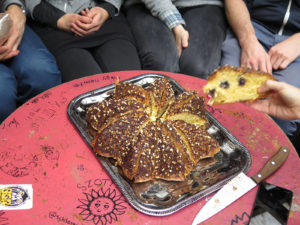One of the key decision to be made in setting up a new housing project, is around financial participation of the residents in the assets (the building). When delving into this question, a range of choices seem possible: from mimicking individual ownership (through a members’ full share of an apartment) up to mimicking a clear-cut rental model (through a model entirely based on monthly contributions, but not requiring a collateral deposit from members). For contribute equitably reasons those two extremes are unlikely candidates. During the recent MOBA meeting (25-27 January 2019 in Budapest) the discussion around this question has brought up a few insights.
First of all, the very format of a cooperative – due to adherence to the 7 cooperative principles, a set of rules that have guided this movement for over 175 years – assumes the direct economic participation of the members. This means that they contribute equitably to, and (democratically) control, the capital of their co-operative. In practice, this starts often with requiring new members to bring in their own capital (equity) in a certain percentage of the total investment (say 10-20%). While a large share of member capital brought in helps massively in securing additional capital (because it counts in as ‘collateral’), it obviously also is a barrier for access, as not everyone will be capable of raising that amount of capital.
On the other hand, a clear-cut rental model would not bring such barriers, but as we have seen the requirement of equitable member participation excludes it as such, and the necessity of forming a pool of own capital (as ‘collateral’) makes the approach very unpractical. Some (more significant) form of investment and co-ownership by the members thus looks like the way to go.

Doing
Finding a balance that provides easy access as well as long-term security will be something that MOBA will be undertaking in the time to come.
